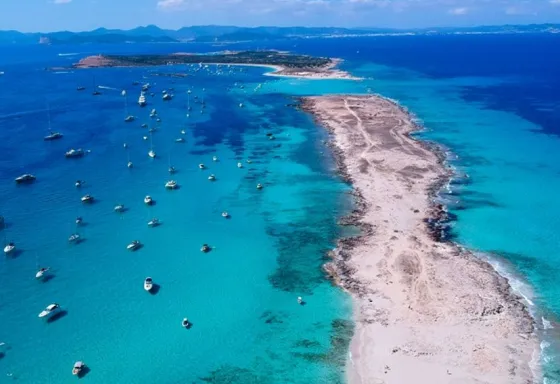Make your dreams come true
Come and disconnect in one of the most paradisiacal places in the Mediterranean
¿Why Formentera?
Located just over 20 km south of Ibiza, this beautifully unspoiled and peaceful paradise island is famous for its golden sandy beaches and coves with crystal-clear turquoise waters. But there is so much more to it!
Discover more reasonsHouses See all
Rustic houses or apartments. Check availability
Services See all
Enjoy the best services

Activities, courses, and events
Kayak, paddle surf, wind surf... Enjoy our proposed activities alone or with your family

Boats and yachts
With or without skipper. Check out the multiple options we offer

Local typical dishes
Breakfasts, paellas, barbecues... Relax while we take care of you

Visit the beaches of Formentera
Formentera is known around the world for its spectacular virgin beaches, which are often compared to those of the Caribbean, for the quality of the sand and the surprising clarity of the water.
Rental of houses and apartments in Formentera
The best facilities at your disposal for an unforgettable vacation in the natural paradise of Formentera.
Our staff has selected for you houses and apartments that will allow you to spend wonderful days in one of the most beautiful islands of the Mediterranean. Cheap apartments and luxury villas, located in full tranquility and close to the best beaches, are at your disposal every month of the year for an unforgettable vacation.
Rent of houses and apartments in Formentera with isolated sea views, apartments near the center to live the particular life of Formentera just a click away for you and with the security of a serious and reliable organization. Our sea of unique colors and our white sand beaches are waiting for you!




